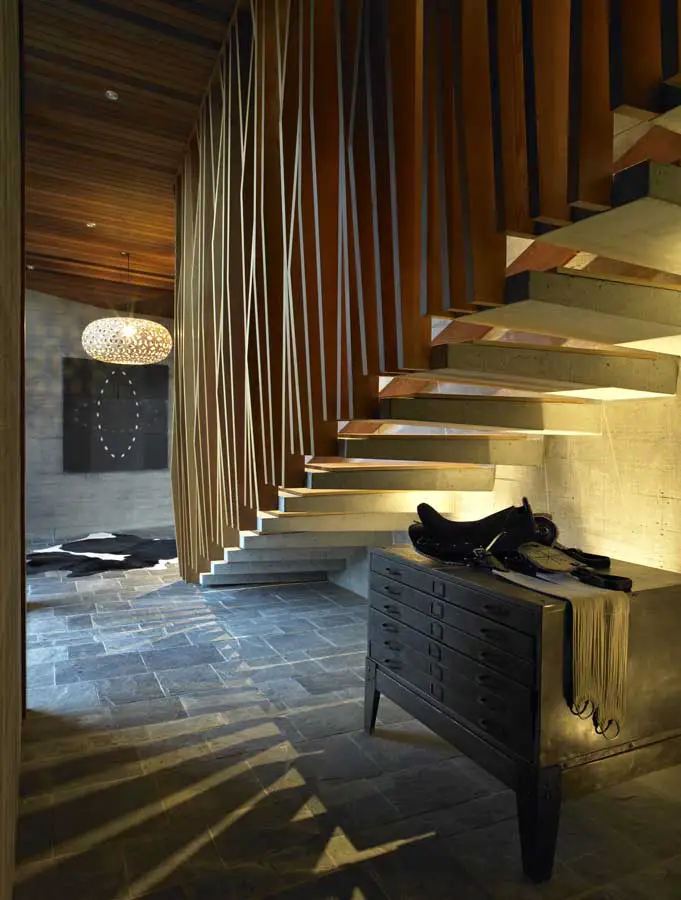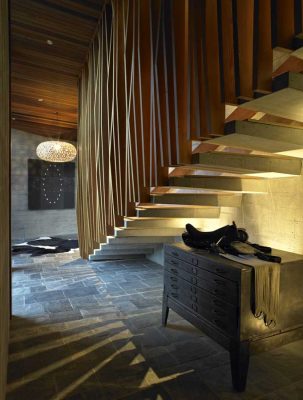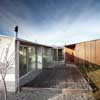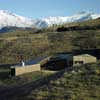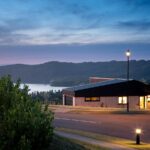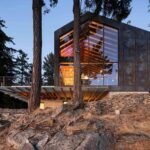Southern Architecture Awards, NZIA 2010, New Zealand buildings architects
Southern Architecture Awards
NZIA 2010 Winners: New Zealand Building Designs & Architectural Offices.
19 Nov 2010
New Zealand Southern Architecture Awards
From transformed opera house to flagship loo – 2010 Southern Architecture Awards announced
The transformation of Oamaru Opera house, a film industry HQ and flagship public loos are among designs celebrated in the 2010 Southern Architecture Awards.
The 2010 Southern Architecture Awards programme is organised and run by the New Zealand Institute of Architects and supported by Resene.
Judging panel convener architect Chris Doudney said there had been a very high standard of entries and it was gratifying to see steady progress towards more sustainable architecture, particularly in residential projects.
“It was a privilege to be able to view these projects,” he said. “Certainly more clients are recognising the importance of sustainable design and requesting that as part of the brief.
“We saw some very interesting elements including the use of geothermal bores as heat sources for heat pump systems.”
Magnificent Opera House redevelopment
The Oamaru Opera House Redevelopment by Williams Ross Architects was a winner in the Public Architecture category, hailed for reclaiming a previously almost unusable building and creating “a magnificent community asset for performance”.
The new backstage facilities wing, with its two-storey glazed atrium was praised as making “a tour de force of the old Oamaru stone wall it abuts”.
Jurors also noted: “The conserved original building sits comfortably alongside the confidently detailed modern elements. The interior fitout skilfully complements the iconic architecture.”
New home for global leader in film industry
The Natural History New Zealand Dunedin Premises was a winner in the Commercial Architecture category. Jurors said the project had transformed a jaded industrial building “providing a new home for a global leader in the film industry”.
Features of the project by Baker Garden Architects include the rigid existing floor plates being broken to create a sunlight-filled atrium with a bridge-like circulation arrangement connecting flexible perimeter workspaces.
Elegant ecosanctuary and flagship loos
Public Architecture Award winners also included The New Orokonui Ecosanctuary Visitor Centre in Dunedin, by Architectural Ecology, admired as an “astonishingly elegant work of architecture” achieved from a simple brief and modest budget.
The Frankton Bus Shelter and Public Toilets in Queenstown, by Mary Jowett Architects, was described as a flagship facility that earns the respect of its users.
Sustainable Architecture awards for university buildings
The new University of Otago – William James Building, also by Architectural Ecology, won a Sustainable Architecture award and was praised as responsive, energy efficient and sustainable, pointing “the way forward for campus development”.
The University of Otago, Microbiology Building Re-Clad and Climate Control by Opus Architecture was also a winner in the category.
Jurors admired the way a new skin over the existing concrete facings, together with upgraded heating and ventilation services had “transformed this previously deteriorating and underperforming building”.
They also noted the “subtle two-tone bronze colouration, which glows gently in morning and evening sunlight”.
Commercial architecture winners also included Wyuna, at Glenorchy, Otago, by Crosson Clarke Carnachan Chin Architects.
The project, a community recreation facility for a planned residential development, includes a spa, pool and boathouse.
Jurors said the building is confidently and beautifully detailed giving “a nod to historic working sheds on the surrounding farm”, and sits in harmony with the commanding landscape.
Residential Architecture – Houses
Winners in the Residential Architecture – Houses category included Albert Town House by McCoy and Wixon Architects, described as “a delicate house camped on the banks of the Clutha”.
Jurors admired the way the living space and outdoor areas had been “skilfully manipulated along the river edge of the site in an open gesture of freedom and lightness”.
A Northburn Peninsula House in Cromwell, also by McCoy and Wixon Architects and glazed on three sides was seen as “welcoming, bright and airy” and “sits lightly on the Central Otago landscape”.
An Arrowtown House, by Kerr Ritchie, which is “nestled gently against its hillside among the apricots”, was praised as a “warm, enchanting and distinctly modern home”.
A Kelvin Heights House in Queenstown by Athfield Architects was described as a “joy to inhabit,” with a “masterly composition of overlapping courtyards, terraces, rooms and circulation spaces”.
The QT Haus in Queenstown, by Richard Priest Architecture, was admired as powerfully executed, combining “Lakeland alpine living with urban chic”.
The clever use of natural light and materials, including wood, textured concrete, steel and glass, was seen to lend “an ethereal quality” to the generously proportioned Ross Creek House at Maori Hill, Dunedin, by Mason & Wales Architects.
Te Kaitaka – Lake Wanaka Retreat by Stevens Lawson Architects, was described as “this rock-like multifaceted house – tucked into the rugged hillside” with a sense of calm permanence and protection in an exposed remote site.
The Waite House in Wanaka, by Rafe Maclean Architects, was seen as stylish and contemporary, tracing the low linear ’kiwi modern’ style of the 1940s while dealing directly to new expression.
Alterations and additions to the McMillan Street Residence in Dunedin by Richard E Shackleton Architects, was described as an “enjoyable transformation” of a cottage. Jurors admired the “witty steel verandah columns” and “new garden-focused modern extension”.
Jurors
Mr Doudney, who is based in Christchurch and Dunedin, was joined on the jury by architect Michael Wyatt from Queenstown and architectural graduate Hannah Sharp from Dunedin. The lay juror was heritage and built environment consultant Elizabeth Kerr from Dunedin. As well as visiting all shortlisted properties, the judges met whenever possible with the architects and clients. The buildings were judged against a series of key criteria including their contribution to the advancement of architecture as a discipline and enhancement of the human spirit.
2010 Southern Architecture Awards Judges Citations
Public Architecture
Oamaru Opera House Redevelopment
William Ross Architects
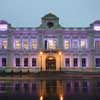
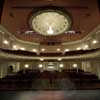
photos from NZIA
The Opera House Redevelopment has reclaimed an almost unusable building, creating a magnificent community asset for performance, functions and events. The new backstage facilities wing with its two-storeyed glazed atrium makes a tour de force of the old Oamaru stone wall it abuts; the conserved original building sits comfortably alongside the confidently detailed modern elements. The interior fitout skilfully complements the iconic architecture.
Orokonui Ecosanctuary Visitor Centre
Architectural Ecology Ltd
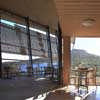

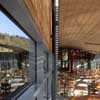
photos from NZIA
From a simple brief and modest budget, an astonishingly elegant work of architecture has been produced. The architect, consultants and builders have together responded precisely to the building’s environment and purpose. The clustered container forms with their wafers of rainscreen roofs provide an expandable service and kitchen zone to one side of the central canopy, on the other a successful classroom and resource space. Judging from the extensive planting evident around the building all will be subsumed into a regenerated bush setting above which the distinctive, crafted atrium will sail.
Frankton Bus Shelter and Public Toilets
Mary Jowett Architects Ltd
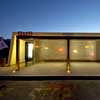
photo from NZIA
A slender steel roof wraps up and over two concrete pavilions parked up against the back of the bus stop platform, the boarding side defined by a Cor-ten colonnade which also screens the public toilets. Lichen coloured doors provide an engaging entry to generous cubicles – clean, light and airy. Sturdy, practical detailing is at the heart of this flagship facility that earns the well-deserved respect of its users.
Residential Architecture Design – Houses
Albert Town House
McCoy and Wixon Architects Ltd
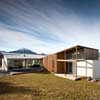
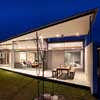
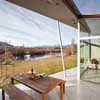
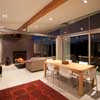
photos from NZIA
A delicate house camped on the banks of the Clutha. There is integrity to the limited material palette of bagged concrete block, together with board-and-batten western red cedar. The living space and outdoor areas are skilfully manipulated along the river edge of the site in an open gesture of freedom and lightness.
Northburn Peninsula House
McCoy and Wixon Architects Ltd

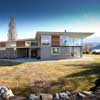
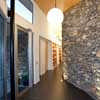
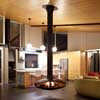
photos from NZIA
Glazed on three sides, the living pavilion of this confidently detailed house contrasts with the single aspect bedroom and service spaces of the adjoining wing. The living pavilion is also set at an angle from the bedroom wing, creating a comforting sense of enclosure above the lake. Welcoming, bright and airy, the house sits lightly in the Central Otago landscape.
Arrowtown House
Kerr Ritchie Limited

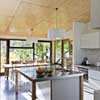
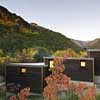
photos from NZIA
This compact, responsible dwelling represents a skilful response to a challenging site and strict district plan. Nestled gently against its hillside among the apricots, and turning a protective back to the street while opening to the valley below, it embraces the sun. Boundaries are blurred between neighbouring properties, instilling a strong sense of community. Cedar, ply, concrete and flashes of bright yellow are expertly handled in this warm, enchanting and distinctly modern family home.
Ross Creek House
Mason & Wales Architects Ltd
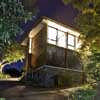

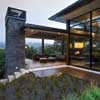

photos from NZIA
This generously proportioned house is set among trees with bush-clad views toward the Ross Creek valley. Its simple horizontal lines and vertical divisions of space give it a serene connection to the outside world in a delightful and uncomplicated way. The clever use of natural light and materials – wood, textured concrete, steel and glass – lends an ethereal quality.
Kelvin Heights House
Athfield Architects Limited
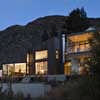
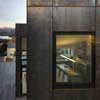
photos from NZIA
This is a masterly composition of overlapping courtyards, terraces, rooms and circulation spaces. New and rational realignments are created as the building steps down the steeply sloping site. Cor-ten steel and Oamaru stone claddings intuitively contrast and define the central living area. This lakeside family house is, quite simply, a joy to inhabit.
QT Haus
Richard Priest Architecture
This powerfully executed rectilinear house combines lakeland alpine living with urban chic. Outstanding views are superbly framed within the flow of a tranquil contemporary living space on two levels, contoured to the 40-degree slope. The well-honed choice of materials, indoor/outdoor transitions, and the quality of light and shadow achieved inside the house all contribute to a compelling spatial experience.
Te Kaitaka – Lake Wanaka Retreat
Stevens Lawson Architects Ltd
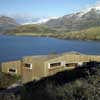
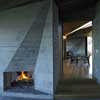

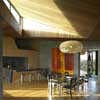
photos from NZIA
This rock-like multifaceted house is tucked into the rugged hillside. Folded plate logic is carried through to the wood and concrete interior where triangulated planes define the set of interlinked spaces and frame outstanding views southward across the lake. The controlled detailing imbues a sense of calm permanence and protection in what is an exposed, remote site.
Waite House
Rafe Maclean Architects
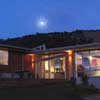
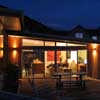
photos from NZIA
This stylish contemporary house traces the low linear ‘kiwi modern’ style of the 1940s while dealing directly to new expression. The stepped roofs and floor planes follow the natural disposition of the land. An open plan kitchen and living area with access to both north and south decks forms the upbeat hub of the house. Good sun exposure and the indoor/outdoor living requirements of the clients are provided for in straightforward, modular units.
McMillan Street Residence – Alterations & Additions
Richard E Shackleton Architects Ltd


photos from NZIA
The enjoyable transformation of this cottage is signalled in the entry courtyard by the witty steel verandah columns. The expansion eastward into the side yard satisfyingly enlarges a front bedroom, and simultaneously enables the layout of the new garden-focused modern extension at the back of the house.
Commercial Architecture
Natural History New Zealand Dunedin Premises
Baker Garden Architects

photo from NZIA
A jaded industrial building has been given an overhaul from the inside out, providing a new home for a global leader in the film industry. Natural light, visibility and opportunities to forge relationships between teams were a priority for the client. Taking a commonsense approach to sustainability, the rigid existing floor plates are broken to create a sunlight-filled atrium. The bridge-like circulation arrangement connects flexible perimeter workspaces.
Wyuna
Crosson Clarke Carnachan Chin Architects Ltd
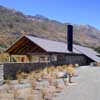

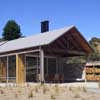
photos from NZIA
With a nod to historic working sheds on the surrounding farm, the straightforward premise of the main building has been upheld through confident detailing and beautiful craftsmanship. Manipulation of material and scale on the exterior provide cues to the more private spaces within. Relationships between hillside, pavilion, boatshed and lake are deftly managed, allowing this praiseworthy new addition to sit in harmony with the commanding landscape.
Sustainable Architecture
University of Otago – William James Building
Architectural Ecology Ltd
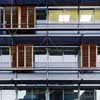

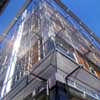
photos from NZIA
The new building complements – and successfully links – existing buildings in the Psychology enclave off Leith Walk. Teaching, administrative and research functions are all catered for through flexible modular space planning. Ease of access is maintained for the broad user community. The tension and finesse of the external skeleton delivers an aesthetically pleasing, layered building appearance that holds light and movement. This responsive, energy-efficient and sustainable building, at a Green Building Council 5 star level, points the way forward for campus development.
University of Otago, Microbiology Building Re-Clad and Climate Control
Opus Architecture

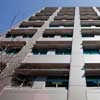
photos from NZIA
A new skin over the existing concrete facings, together with upgraded heating and ventilation services, have transformed this previously deteriorating and underperforming building. The subtle two-tone bronze coloration, which glows gently in morning and evening sunlight, is eye-catching without being strident. The reinvigorated building relates well to the immediate architectural and landscape setting with a blend of prominence and style.
About the New Zealand Architecture Awards
The New Zealand Architecture Awards programme was established by the New Zealand Institute of Architects to celebrate the innovation, creativity and excellence of architectural projects nationwide.
The awards are open to all NZIA Practices, and projects can be entered into one or more of 10 categories – Public Architecture, Residential Architecture – Housing, Residential Architecture – Multiple Housing, Commercial Architecture, Urban Design, Interior Architecture, Heritage, Small Project Architecture, Sustainability, and Enduring Architecture.
There is no limit to the number of awards the local jury can make in any category.
The programme has three tiers, progressing from the eight regional awards to national recognition – the New Zealand Architecture Awards – and through to the ultimate accolade, the New Zealand Architecture Medal.
All local winners become eligible for consideration for a New Zealand Architecture Award, decided by a national jury, which includes an overseas judge, in early 2011.
In May at the NZIA’s annual Gala Dinner, the finalists for the New Zealand Architecture Medal will be announced, and the winner named later in the evening. Only one New Zealand Architecture Medal is bestowed each year, in recognition of a single built work.
New Zealand Architecture Awards 2010
New Zealand Architecture Awards – Regional Winners 2010
Auckland Architecture Awards – winners, 19 Oct 2010
NZIA Awards 2010-11

picture from NZIA
Location: Oamaru, New Zealand
New Zealand Architecture
Contemporary New Zealand Buildings
New Zealand Architecture Designs – chronological list
New Zealand Architecture Studios
Buildings / photos for Southern Architecture Awards page welcome

